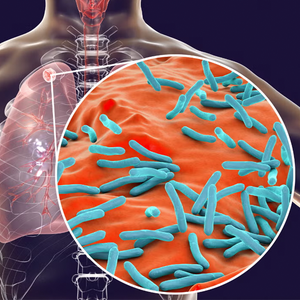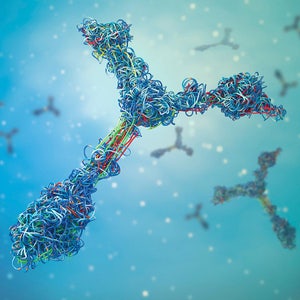MicroRNAs (miRNAs) are a class of non-coding RNA molecules of 22 nucleotides in length on average that regulate gene expression post-transcriptionally. Since their discovery in 1993, miRNAs have garnered significant attention due to their role in regulating gene expression, their stability in body fluids and their involvement in various diseases, including cancer. The 2024 Nobel Prize in Physiology or Medicine was awarded to Victor Ambros and Gary Ruvkun for their discovery of microRNAs,
In this blog we will review the features that lead the scientific community to consider these molecules as promising biomarker candidates.
Biogenesis and Function
The biogenesis of miRNAs is a highly regulated process. Canonical miRNAs biogenesis begins with RNA polymerase II enzyme transcribing primary miRNAs (pri-miRNAs) from a miRNA gene. These pri-miRNAs undergo processing in the nucleus by the Microprocessor complex, which includes Drosha and DGCR8, to form precursor miRNAs (pre-miRNAs). The pre-miRNAs are then transported to the cytoplasm, where they are further processed by the enzyme Dicer into mature miRNAs (Figure 1). There are two other pathways known for miRNA biogenesis, but their mechanisms are still not well-understood.
These mature miRNAs are then incorporated into the RNA-induced silencing complex (RISC), guiding the complex to target the 3’-UTR of target mRNAs based on sequence complementarity.
The expression patterns of miRNA are tissue specific. Dysregulation of miRNA expression is closely associated with the pathogenesis of various diseases, including (but not limited to) cancer, cardiovascular diseases, neurodegenerative disorders, and metabolic conditions. At the moment of writing this blog, there are >30,000 peer-reviewed papers correlating miRNA levels with disease.
In the context of cancer, miRNAs can function as tumor-suppressor gene or oncogene by targeting genes involved in tumor development and progression or cell-cycle inhibition, respectively. Different miRNA profiles can be identified for different tumor types, which could then serve as phenotypic signatures for exploitation in cancer diagnosis, prognosis, and treatment. For instance, the miR-17-92 cluster downregulates PTEN, E2F and the TGF-β signaling pathway among others. Functionally, it favors tumor growth and is reported to be overexpressed in small-cell lung cancer, colon cancer, hepatocellular carcinoma, thyroid cancer, colorectal adenoma organoids, and renal cell carcinoma. In another example, miR-21 downregulates PTEN, TPM1 and PDCD4. Overexpression of this miRNA is reported in the plasma and tumor tissues of cancer patients and is associated with poor prognosis in breast cancer.
The miRNA-29 family is abundantly expressed in the brain where it is related to cell survival. It has been found that miR-29 is downregulated in Alzheimer's disease, and is involved in the regulation of BACE1, an enzyme that produces amyloid-beta, a key component of amyloid plaques.
Finally, miR-155 is involved in the regulation of blood pressure by targeting the angiotensin II type 1 receptor. Studies have shown that miR-155 is upregulated in cases of pulmonary hypertension and has been linked to blood pressure regulation in pregnant hypertension.
Presence of miRNA in extracellular space
Extracellular miRNAs are ubiquitous. They have been detected in every human body fluid tested to date, including plasma, saliva, urine, breast milk, tears, cerebrospinal, pleural, peritoneal, amniotic and seminal fluid. Interestingly, several miRNAs are uniquely present in specific body fluids. They constitute 0.1-1% of the total extracellular RNA, except in plasma, where they can reach up to 5%. There are large variations in the number of unique miRNA species that can be found on each fluid type, being saliva one of the sample types with highest number of detectable miRNA species (>400). The ability to detect miRNAs in circulating fluids enables non-invasive sampling, which is particularly advantageous for frequent monitoring and early disease detection.
Unlike other RNA species, miRNAs are stable in the extracellular space. For example, different blood preservation tubes have limited effect on miRNA profiles, and it is known that miRNA signature from blood is stable even when keeping sample at ambient temperature during 24 h. miRNAs are protected from degradation by forming complexes with various proteins like Argonaute 2 and high-density lipoproteins. A fraction of miRNA appears encapsulated in extracellular vesicles (EV). It is estimated that 6-10% of miRNA in body fluids are encapsulated in EV. EVs mediate intercellular communication by acting as delivery vehicles that transfer cargo from one cell to another. They are ideal for testing purposes because their cargo often reflects the biological status of the parental cell.
To date, 2,654 mature miRNAs have been reported in humans, a much simpler “universe” than the one for mRNA and proteins. The non-coding nature of miRNAs also means they are less prone to genetic mutations compared to protein-coding genes, providing a stable target for biomarker development.
Methods to detect and quantify circulating miRNA
Quantitative PCR (qPCR) is a widely used method for miRNA detection. It allows for the precise quantification of miRNA levels, even in small sample volumes, making it ideal for detecting low-abundance miRNAs in extracellular fluids. qPCR is relatively fast and cost-effective for small to medium-scale studies. However, its main disadvantage is the limited ability to multiplex, meaning it can only analyse a few miRNAs at a time. Additionally, qPCR requires prior knowledge of the target miRNA sequences, which can be a limitation when studying novel or poorly characterized miRNAs.
Microarray technology allows the simultaneous analysis of thousands of miRNAs. This makes it a powerful tool for discovering new miRNAs and profiling miRNA expression patterns across different conditions. However, they have lower sensitivity compared to qPCR and next-generation sequencing (NGS) and can be affected by cross-hybridization and background noise. Additionally, microarrays require extensive data analysis and validation through other methods, such as qPCR.
Next-generation sequencing (NGS) provides a comprehensive and unbiased approach to miRNA detection, capable of identifying both known and novel miRNAs. NGS can analyse the entire miRNA transcriptome in a single run, making it ideal for in-depth studies and biomarker discovery. It also allows for the detection of miRNA isoforms with single-base resolution. However, NGS is more expensive and time-consuming compared to qPCR and microarrays. The data generated by NGS requires extensive bioinformatics analysis, and despite the tools developed it can be a barrier for some laboratories.
References:
- Hayes, J., Peruzzi, P. P., & Lawler, S. (2014). MicroRNAs in cancer: biomarkers, functions and therapy. Trends in Molecular Medicine, 20(8), 460-469.
- O'Brien, J., Hayder, H., Zayed, Y., & Peng, C. (2018). Overview of microRNA biogenesis, mechanisms of actions, and circulation. Frontiers in Endocrinology, 9, 402.
- Wang, K., Yuan, Y., Cho, J. H., & McClarty, S. (2018). MicroRNAs in body fluids as biomarkers for non-invasive disease diagnosis. Advances in Clinical Chemistry, 85, 73-102.
- Sheinerman, K. S., & Umansky, S. R. (2019). Circulating cell-free microRNA biomarkers for Alzheimer's disease. PLoS One, 8(7), e69841.
- Chakrabortty, A., Patton, D.J., Smith, B.F., Agarwal, P. (2023) miRNAs: Potential as Biomarkers and Therapeutic Targets for Cancer. Genes.14(7):1375
- Li, S., Lei, Z. & Sun, T. The role of microRNAs in neurodegenerative diseases: a review. Cell Biol Toxicol 39, 53–83 (2023).
- Ko, S.Y., Lee W., Naora, H. (2024), Harnessing microRNA-enriched extracellular vesicles for liquid biopsy. Front. Mol. Biosci. 11:1356780.
- Bofill-De Ros, X., Vang Ørom, U.A. (2024) Recent progress in miRNA biogenesis and decay, RNA Biology, 21:1, 1-8
- Searles, C.D. (2024). MicroRNAs and Cardiovascular Disease Risk. Curr Cardiol Rep 26, 51–60











































